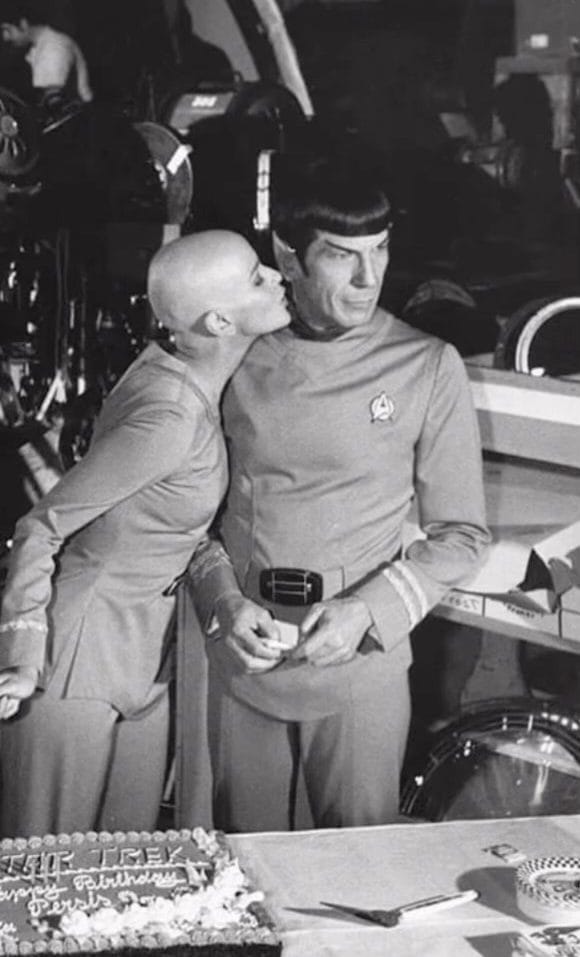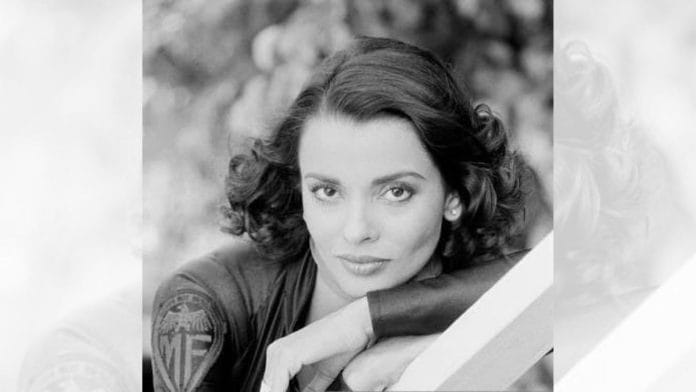Before Hollywood knew how to handle a bald woman of colour, Persis Khambatta had already made cinematic history. A Miss India at 16 and the first Indian to present an award at the Oscars in 1980, Khambatta shattered expectations with intensity and fearless grace. For her role in Star Trek: The Motion Picture (1979), she shaved her head and redefined femininity at a time when beauty meant long hair and fair skin.
Born in 1948 in Bombay to a Parsi family, Khambatta was raised by her mother after her father left when she was just two. Her career began by chance—a photograph of her, clicked when she was just 13, landed her a commercial for Rexona soap. A few years later, she represented India at Miss Universe 1965, wearing off-the-rack clothes she had hurriedly purchased herself.
Khambatta was more than a trailblazing beauty queen or sci-fi icon—she was a fearless original who broke barriers in both Hollywood and Indian culture.
Disillusioned by the Indian film industry’s lack of professionalism, Khambatta first went to London, then landed in Los Angeles. There, Star Trek came calling with the role of Ilia.
“Star Trek was a success. She was recognised, admired. But she didn’t manage to land any substantial roles after that,” actor Kabir Bedi told ThePrint. “And I was sad about that. Because that’s the reality of trying to act in a different country.”

Fame, frustration, and resilience
Though Star Trek brought her international fame, Hollywood didn’t know what to do with someone like Khambatta. She was exoticised, typecast, and often overlooked. Roles in action-thrillers Nighthawks (1981) with Sylvester Stallone and Megaforce (1982), along with guest appearances on TV shows like MacGyver followed, but nothing ever equaled the impact of Ilia. She was nearly cast as the Bond girl in Octopussy (1983), but it slipped through her fingers.
Still, she never let disappointment define her and kept working, undeterred by the industry’s fickle nature. Selected by Patrick Litchfield—photographer to the Queen—as one of the ten most beautiful women in the world, Khambatta broke barriers for Indian women in global beauty circles, relying on her intuitive mind, sharp tongue—she famously told actor William Shatner during the shoot that his wig was crooked—and an independent spirit.
She was fiercely selective about how she presented herself, famously turning down offers from Playboy and Penthouse. In London, she once survived on a diet of potatoes and cigarettes. She also gave back: raising funds for disaster relief, writing her anthology Pride of India—a tribute to Miss India winners dedicated to Mother Teresa—and dreaming of turning it into a television series that would spotlight strong Indian women.
“The earlier Indian queens were really beautiful but they lost out in the world contests because they had fuller hips. The starved, slim look is being cultivated only now,” Khambatta once said.
The book, however, was poorly received, with one critic harshly remarking, “At its worst, it’s costly repetition. Mostly, Persis, thank you for reminding us about yourself.”

Legacy beyond the lens
Khambatta was much more than a beautiful face or a bald icon of sci-fi legend. She was a woman of unfiltered honesty and deep empathy. While the media often speculated about rivalries—particularly with fellow model-turned-actress Zeenat Aman—she brushed it all aside, preferring work over drama.
Her circle included legends: she lunched with actor-director Laurence Olivier, acted alongside Sidney Poitier in the 1975 film The Wilby Conspiracy, and counted stars like Barbra Streisand, Robert De Niro, and Michael Caine among her acquaintances. But even as Hollywood opened its most glamorous doors, she never forgot her roots — or her mother, whom she cared for throughout her life.
For Khambatta, life was guided by a belief in the power of energy and intention. “If you throw a ball at the world,” she once said, “it will come back to you with the speed with which you throw it.”
Her spiritual beliefs, deeply rooted in disciplines like Reiki and Vipassana meditation, helped her face life’s trials. After the end of her brief marriage to actor Cliff Taylor—whom she described as “a lover in a past life”—she retreated to an ashram in New York. There, a dream of “snakes falling out, a flower opening up” became a personal symbol of emotional renewal.
Diagnosed with a heart condition at 34 and given three months to live, she defied the odds, living 15 more years filled with ideas, plans, and purpose.
“She was proud of her Indian heritage,” Bedi said. “We would often go out for Indian food in LA—simple joys that reminded us of home. But our relationship ended and we drifted apart, kept our distance. But I always remembered her as a kind, sensitive person.”
Though she passed away in 1998 at just 49, Khambatta’s legacy lives on. The Persis Khambatta Memorial Award, instituted in 1999 and given to top fashion graduates at India’s National Institute of Fashion Technology, honours her pioneering spirit.
(Edited by Prashant)






